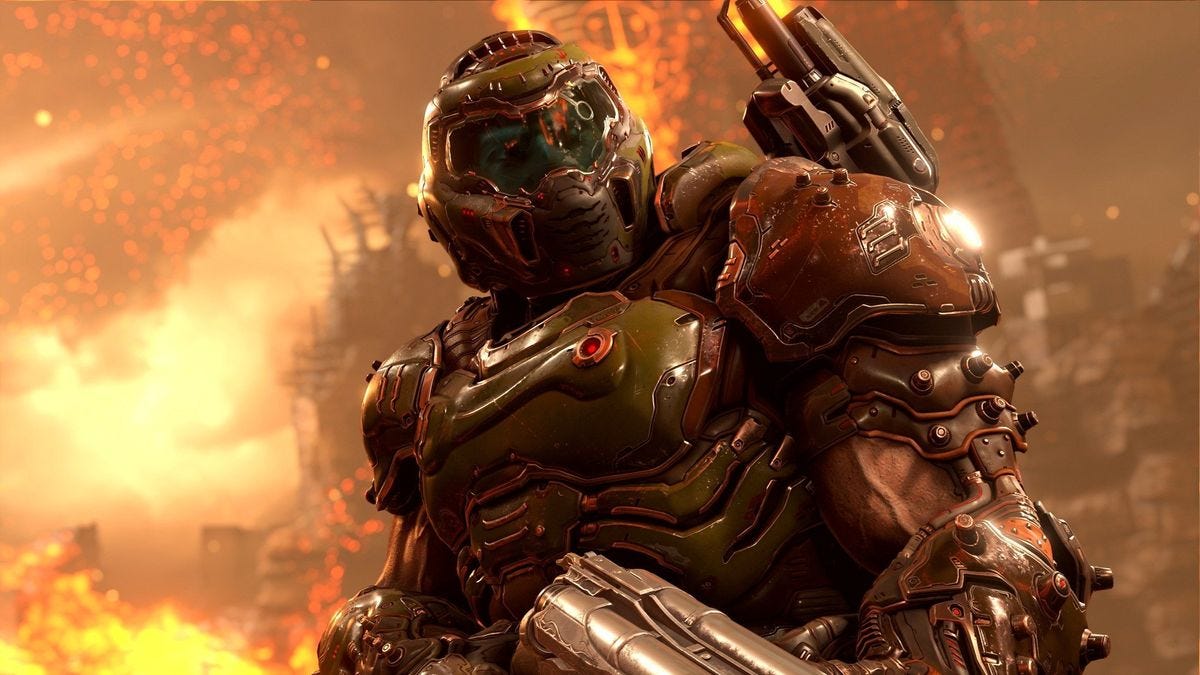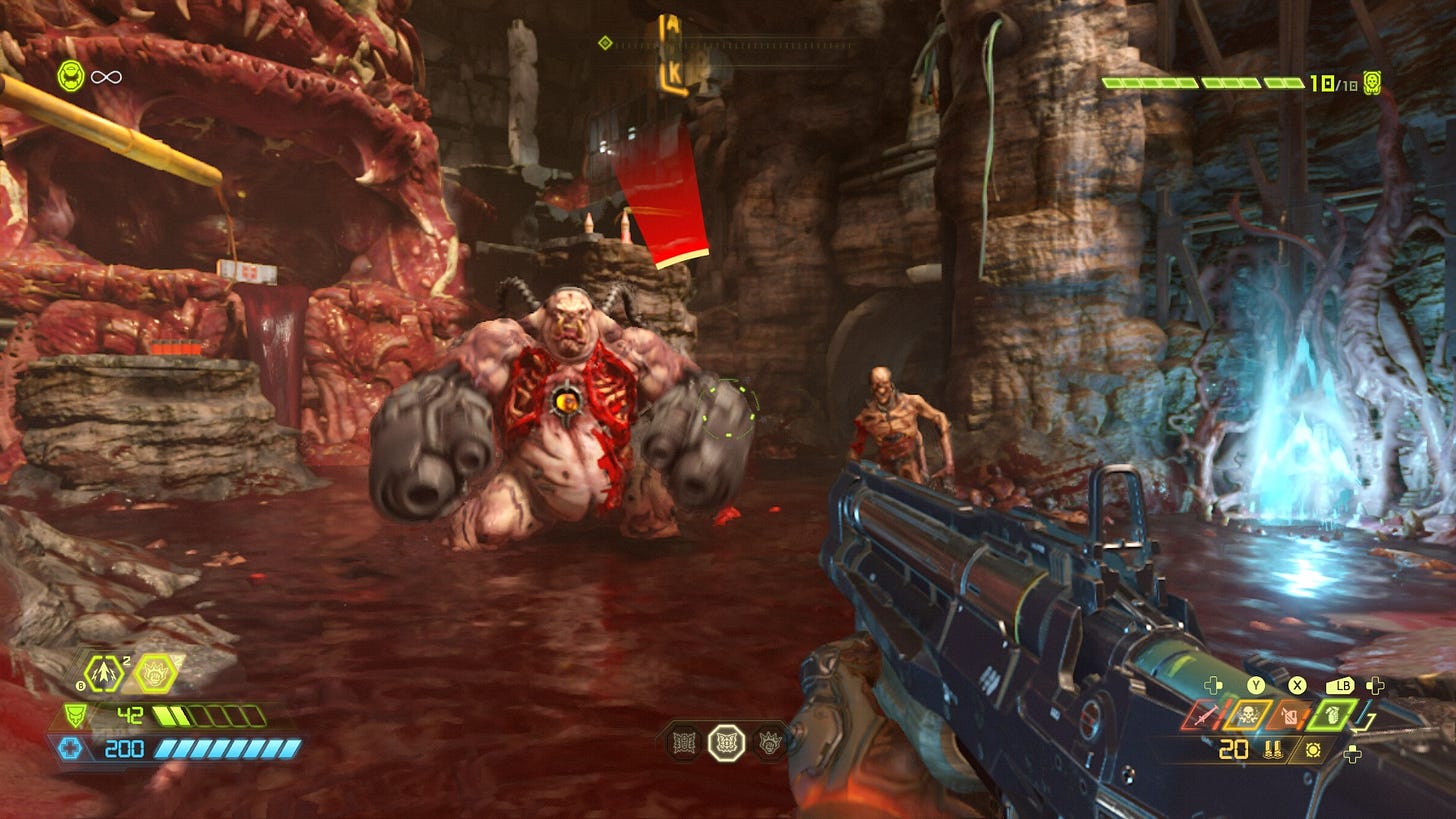When Doom was rebooted in 2016, the final game felt like a statement. After a decade of post-Call of Duty military shooters with limited arsenals, regenerating health, and pseudo-realistic visuals and stories, Doom 2016 kicked the door off its hinges with a kinetic orgy of demonic violence. It ruled! Four years later, ID Software released Doom Eternal, a game that took the new winning formula and added so many new mechanics that many players at the time were turned away. The violent gameplay was supplemented with more resources, more weapons, faster enemies, a steep learning curve, and a supreme ‘fuck you’ attitude. For me, Doom Eternal sticks the landing better than can be expected, and the aforementioned violence orgy from Doom 2016 instead becomes an elegant ballet of violence.
Integral to this ballet is the change to how you view your arsenal. Unlike in Doom 2016, in Doom Eternal, no weapon ever feels obsolete. From the humble combat shotgun you start with to the explosive BFG, every gun has its role in your repertoire. This does force you to master every weapon instead of just relying on old favorites. Ammo is also scarce, and you burn through it quickly. A typical combat encounter involves you running through arenas, using precise weapons to attack weak points, running as fast as possible, churning through ammo, using your chainsaw to attack fodder enemies to get ammo (because that makes sense), and using classic “Glory Kills” to finish off demons to regain health. There’s a lot to juggle, and thus Doom Eternal is not the same kind of power-trip that Doom 2016 provided. The learning curve is steep, but once the curve is conquered, Doom Eternal makes you feel like a god.
Another aspect of Doom Eternal that was decisive, but I love, is how platforming and exploration sit alongside combat. During fights and exploratory downtime, you’ll often be navigating traversal challenges such as leaping across chasms, swinging from monkey bars, and timing dashes to avoid traps. It’s not always the most precise of platformers, but the fact that first-person platforming works so well here is commendable.
What works a little less well is the amount of resource management that Doom Eternal requires. As I mentioned, you have a lot of tools at your fingertips. Guns, movement, traps, enemy weak points— it’s all here. However, you also need to manage weapon secondary functions, suit upgrades, using your flamethrower more armor (again, makes sense), two types of grenades, and so on. It’s a bit much, and at the outset, there’s a lot of brief tutorials, but the tutorials are so fast and packed into the first hour of gameplay that lessons from the tutorials just bounced off of my mind.
All that being said, Doom Eternal really clicked for me. It’s a bit like jazz music. There’s a lot going on at once, and for some, it’s a mix of parts that don’t quite gel. For me, though, the rhythm of play is unsurpassed. While playing its sequel, Doom: The Dark Ages, everything felt wrong, and I’ll need to give it time for that one to click. For now, Doom Eternal scratched an itch I didn’t know I had.



